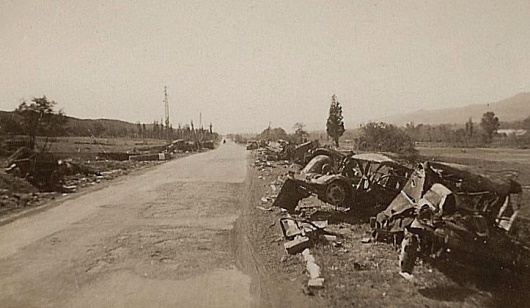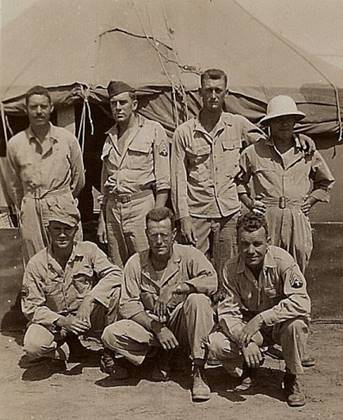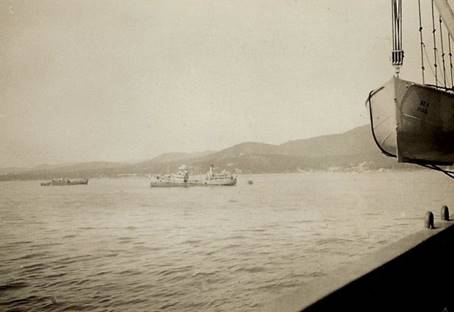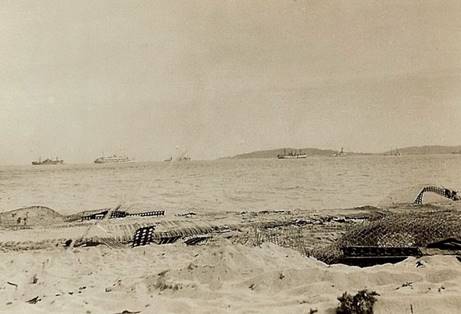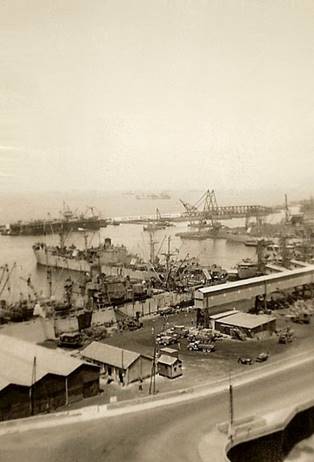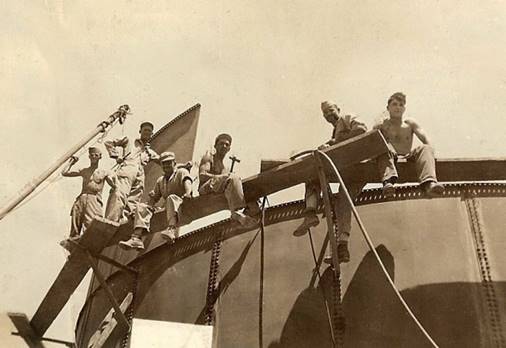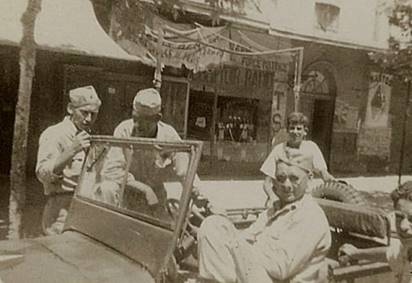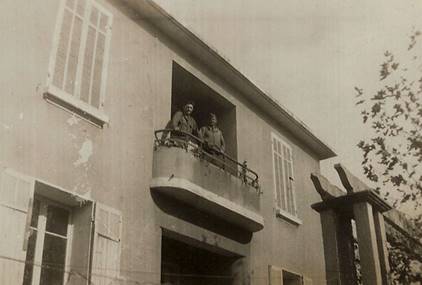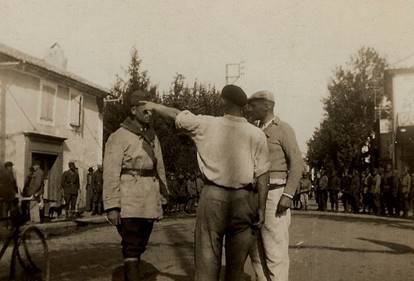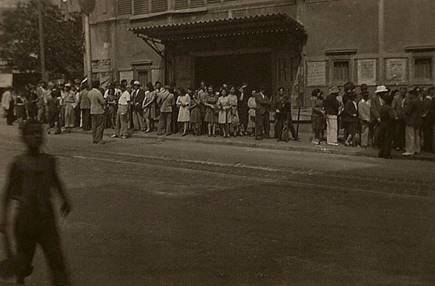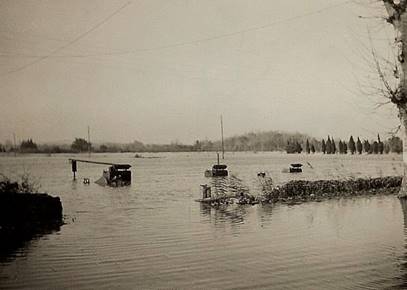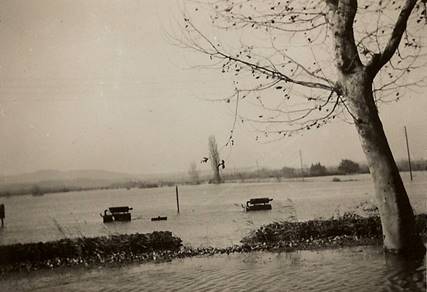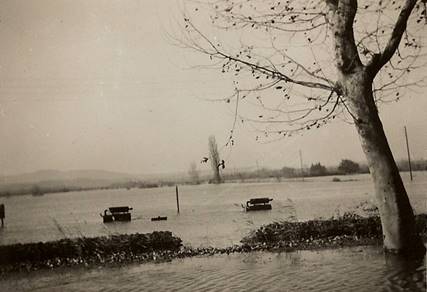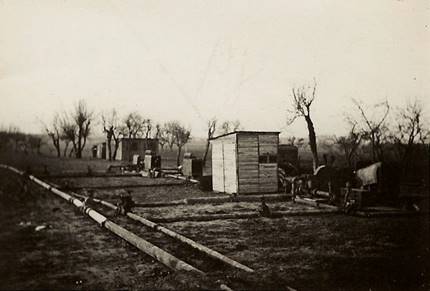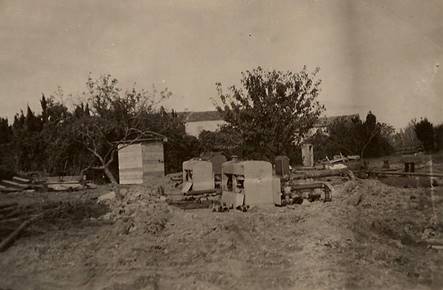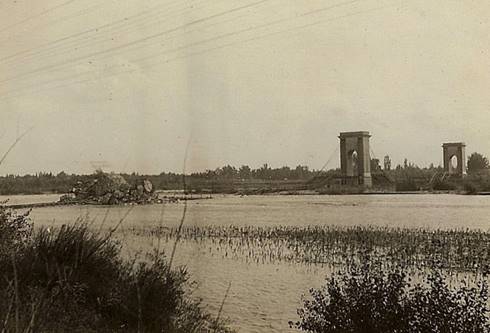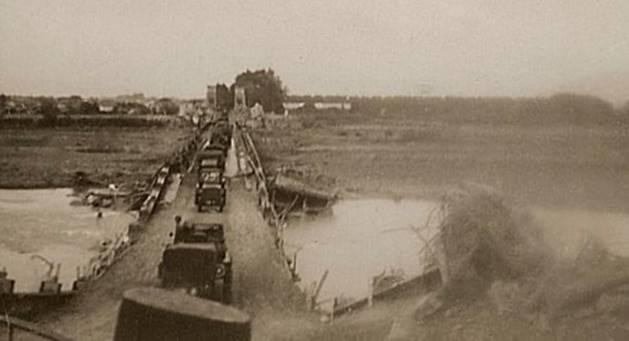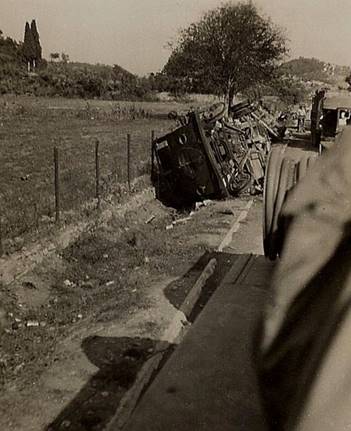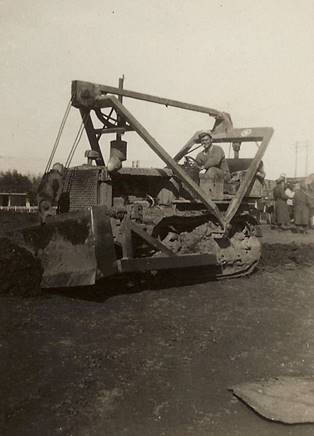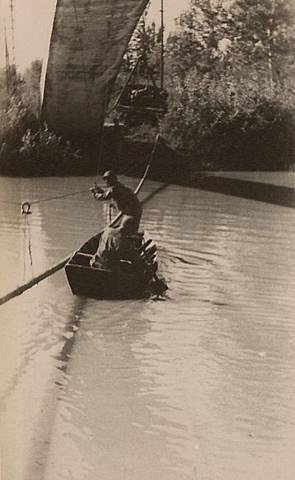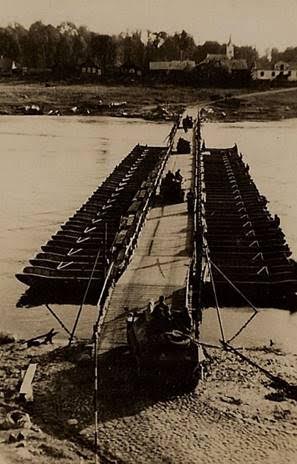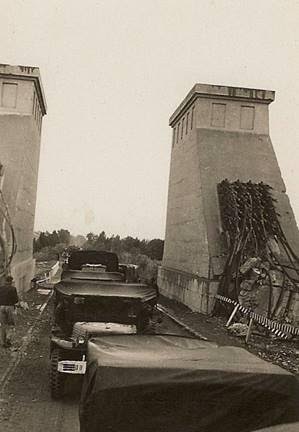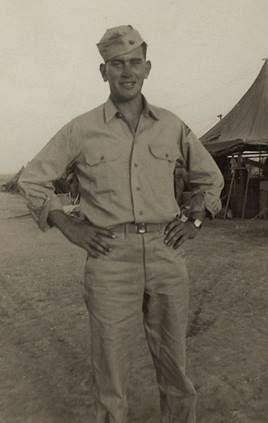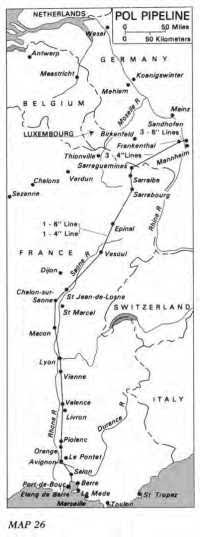
+- Forums (http://www.6thcorpscombatengineers.com/forumnew)
+-- Forum: World War II (http://www.6thcorpscombatengineers.com/forumnew/forumdisplay.php?fid=43)
+--- Forum: WWII ENGINEERS (http://www.6thcorpscombatengineers.com/forumnew/forumdisplay.php?fid=9)
+--- Thread: WWII engineers - southern France - help needed identifying unit (/showthread.php?tid=5143)
WWII engineers - southern France - help needed identifying unit - Walt's Daughter - 08-10-2016
Marion, I found your website while trying to search for information on a small collection of personal snapshots of what appeared to be a WWII engineering unit. I bought the set at a second-hand store who had no information on their origin. I have collected snapshots and ephemera of, among other things, WWII, and try to research their meaning and content. Since I retired I have started what I call “Snapshot Rescue” and try to get these images to any organization that will appreciate them. I admire your effort in creating the engineering website and free access to the images; I agree with your stated purpose of history.
There are 24 photos in the set, about 2 ½” x 3”, and none have any written captions or names.
One image was LST 49 which had served in Operation Dragoon, and the others look like a record of the drive North from the landing in Southern France. Several snapshots were of engineering activities which lead me to believe they were done by a member of an combat engineer unit connected to Dragoon.
Let me know if you can ID the unit involved and the men in the photos. I hope some of your readers looking for relatives find them. Let me know if you want me to re-scan at a better resolution as these were done at 200dpi.
-Jon Christian
(1971-73 Staff photographer for US Army Engineer Command Europe, Frankfurt, Germany- not combat engineers but know the difference!)
Marion's note: I will post the pics here over the next few days. Thanks for your patience. In the interim, I started looking up info on LST 49.
WWII engineers - southern France - help needed identifying unit - Walt's Daughter - 08-10-2016
First set of images
WWII engineers - southern France - help needed identifying unit - Walt's Daughter - 08-10-2016
2nd set of images
WWII engineers - southern France - help needed identifying unit - Walt's Daughter - 08-10-2016
3rd set of images
WWII engineers - southern France - help needed identifying unit - Walt's Daughter - 08-10-2016
Yes, if we could get larger scans, we might be able to ascertain more... ![]()
WWII engineers - southern France - help needed identifying unit - Walt's Daughter - 08-10-2016
Wow, interesting story!
http://valor.militarytimes.com/recipient.php?recipientid=308008
WWII engineers - southern France - help needed identifying unit - colinhotham - 08-11-2016
Marion. If this is Dragoon don't we have the perfect person to discuss them with at the reunion in October?
Colin.
WWII engineers - southern France - help needed identifying unit - Walt's Daughter - 08-11-2016
Oh sure do!
WWII engineers - southern France - help needed identifying unit - Walt's Daughter - 08-17-2016
Jon sent this to me via email:
Take a look at- 697th Engineer Petroleum Distribution Company
…it references Technical Services, the Corps of Engineers, the War Against Germany, pp 455 cf.
and
and
POL Operations
The Seventh Army engineer POL plan for DRAGOON, formulated in early summer 1944 at Naples under Lt. Col. Charles L. Lockett, drew on the successful experience with pipelines gained in the North African and Italian campaigns. The engineers envisioned a pipeline system up the Rhone River valley, making use of the already existing refinery installations in Toulon, Marseille, and smaller ports at the river mouth.32Depending on the damage done by the retreating Germans, the engineers could easily support the troops battling in the beachhead area with a gallon of gasoline per man per day, the consumption rate established in earlier campaigns. But the rapid success of the invasion altered the sequence and timing of fuel depot construction and accelerated the schedule for laying of the pipeline north. Demands for gasoline skyrocketed; every truck moving forward off the beaches took with it as many jerry cans as it could hold, but advance units were still sending convoys on 300-mile round trips back to the beach dumps for resupply as the Seventh Army pursued the fleeing German Nineteenth Army to the north. (Map 26)
The 697th Engineer Petroleum Distribution Company was the first of its kind ashore, landing at Camel Green on D-day. Capt. Carl W. Bills, commanding the unit, was among the foremost POL experts in the theater, a man of wide prewar experience in the Oklahoma oil fields; despite his relatively low rank, he became the technical supervisor of the whole fuel pipeline system up the Rhone valley. The company entered St. Raphael as soon as the town was cleared, surveying for a pipeline in that area. Various detachments collected enough petroleum pumping equipment to begin construction and operations, but spent several days retrieving materiel coming to the invasion beaches in scattered lots on small
Map 26: POL Pipeline (see below)
landing craft. The company took four days to construct three 10,000-barrel tanks in the town. By the end of the month, St. Raphael was receiving bulk tanker discharge through one four-inch and one six-inch line connecting the facilities to the docks. Another four-inch aviation gas line covered the six miles from the larger tanks to a 1,000-barrel storage container at the airfield at Frejus. After the field was abandoned, the airfield tank served as a motor fuel storage point.33
Bypassing the embattled petroleum facilities at Marseille and Toulon for the moment, Captain Bills left a 79-man detachment in St. Raphael to run affairs and took the 697th to the next logical point for pipeline operations, the port area around Port-de-Bouc, 120 miles by road from St. Raphael. Arriving 25 August in Martigues, held only by FFI troops, the company rested for a day while the French overcame the last German sniper resistance. Rapid surveys with General Davidson at the scene revealed that, apart from a few bullet holes punched into the tanks by the U.S. XII Tactical Air Force, the prewar storage capacity of 250,000 barrels in the area was undiminished.
On 26 August the 697th began the construction of a nineteen-mile, four-inch-diameter victaulic pipe for 80-octane fuel to connect the refineries of L’Avera at Port-de-Bouc; La Provence at La Mede, three miles east of Martigues on the southern edge of the lake; and the large Bruni oil refining complex on the north shore of the Etang de Berre. A second four-inch line for 100-octane gasoline paralleled the first between Port-de-Bouc and La Mede, where the company built a 1,000-barrel storage tank.
In their four-year occupation the Germans had depleted the supply of coupling joints to match the French fittings within the refineries; the engineers were able to maintain an adequate supply only after the establishment of the engineer dump at Le Pas-des-Lanciers. The occupiers did leave behind a valuable source of expertise in the French former employees of the oil plants and the Vichy government fuel-rationing authorities. After the elimination of collaborators among them, these Frenchmen provided a ready and experienced supplement for Allied manpower and facilitated military and essential civilian fuel distribution.34
With the discharge areas intact and the first inter-terminal line wholly operational by 12 September, the company had already begun the pipeline covering the thirty-five miles between Berre and the Durance River. The line reached Salon, eight miles north of Berre and the site of a large convoy refueling and jerry can refill point, in the first week of construction and by 25 September was at the south bank of the Durance, five miles southeast of Avignon. Here, pushing the pipe across on a 1,480-foot timber trestle, the 697th passed the line to the 784th Engineer Petroleum Distribution Company, which linked it to their completed section. It covered the next thirty-two miles north to the French railroad tank car installation at Le Pontet, the second large decanting station for refueling of truck convoys. Accompanying the engineer pipeline along its whole length was a Signal Corps telephone net that permitted prompt reporting of pipeline leaks.
By early September, the press of operations forced the establishment of a provisional battalion-level supervisory headquarters to coordinate and control the pipelaying and operating activities of eight distribution companies, several attached companies from engineer combat regiments, and one dump truck company. First commanded by Maj. Charles B. Gholson, the unit finally was designated 408th Engineer Service Battalion (Pipeline) on 6 January 1945. It allowed the rapid transfer of supervisory talent among the operating battalion headquarters, the distribution companies, the Delta Base Section, and Continental Advance Section (CONAD) or SOLOC commands as the construction effort demanded. The headquarters also relieved the individual companies of the need to obtain their own supply of pipes, couplings, and pump gear from the harbors in southern France. The battalion tied its wholesale supply to the French rail net, placing stocks of pipe in rail sidings close to the line of construction at roughly twenty-mile intervals.35
After connecting the pipe on the north bank of the Durance, the 784th took responsibility for testing and operating the whole line from Berre to Le Pontet. Meanwhile, the 697th leapfrogged ahead to install the next sec-don of pipe into the rehabilitated French storage tanks at Lyon, with dispensing points at St. Marcel, Vienne, and Lyon itself. By 9 November the pipe was moving nearly 13,000 barrels of fuel daily, a rate maintained until the end of the war on the Rhone River valley pipeline.36
Meanwhile, other petroleum engineer units arrived at Marseille and Port-de-Bouc to continue refurbishing and operating the bulk ports there. The 1379th Engineer Petroleum Distribution Company entered Marseille on 29 August after landing six days earlier at St. Raphael. The fierce battle for Marseille had done little damage to the petroleum facilities, and the company had pipelines running from the quays to the largest refinery at the Rue de Lyon within a week. One group left behind on Corsica to train French petroleum units rejoined the company on 17 September, With detachments in Port-de-Bouc, Marseille, La Mede, and Berre, the 1379th took over the whole tanker discharge operation in southern France and began the construction of a six-inch line around the Etang de Berre as the beginning of a new system to parallel the earlier four-inch pipe. The 696th Engineer Petroleum Distribution Company arrived at Berre on the twenty-first to carry the six-inch pipe to just above Avignon.37 The 701st Engineer Petroleum Distribution Company, another highly experienced unit from the Italian campaign, arrived at Marseille on 9 October and moved the work ahead from Avignon to Piolenc; there, the 696th took over again to a point above Valence.
In late October the Rhone overflowed its banks after heavy rains. The two companies constructing the line up the riverbank south of Lyon had to float pipe into position by plugging one end of it and moving it into the heavy flood waters. A detachment of the 701st downstream repaired the severed four-inch line at Livron. In November, progress on both lines came to a temporary halt when an early freeze blocked the pipes and burst couplings on a stretch between Lyon and Macon—water used to test the pipe before pumping fuel through it had been left in the pipe during a sudden temperature drop. The 697th and the 701st backtracked, hastily thawed the line, and replaced broken sections, allowing operation to resume by 23 November.
The combined work of the 696th and the 697th Engineer Petroleum Distribution Companies and Companies E and F of the 335th Engineer General Service Regiment brought the operational four-inch pipe to the rear of the Seventh Army area at La Forge, near Sarrebourg, on 12 February 1945, although construction was slowed by heavy snow. The six-inch pipe lagged behind north of Vesoul, plagued by an inadequate supply of parts and faulty construction that had to be rechecked. The six-inch pipe became operational to the La Forge terminal on 3 April, while the 697th was overseeing the last leg of four-inch pipe construction in three parallel lines from La Forge through Sarreguemines and Frankenthal, Germany, and across the Rhine near Mannheim into the terminal at Sandhofen, a Mannheim suburb. Another seven miles of six-inch pipe, erected by the 1385th Engineer Petroleum Distribution Company under the supervision of the 697th experts and the 408th Engineer Service Battalion, connected the Frankenthal and Mannheim terminals.38
On 26 February 1945, in the general consolidation of supply operations under ETOUSA, Lt. Gen. John C. H. Lee, commanding the Communications Zone (COMZ), ETOUSA, took under his ultimate authority the petroleum distribution net in southern France along with the pipelines constructed across the northern tier of the Continent. Operations records were turned over to the ETOUSA Military Pipeline Service after 26 February, and the 408th Engineer Service Battalion and its attached units came under the operational control of the ETOUSA staff, though still attached to CONAD for supply and administration. The construction companies remained relatively autonomous through all of the centralizing and remained in place to continue the operation of the 875 miles of four-inch and 532 miles of six-inch pipeline they had emplaced behind the 6th Army Group in the advance from southern France.39
